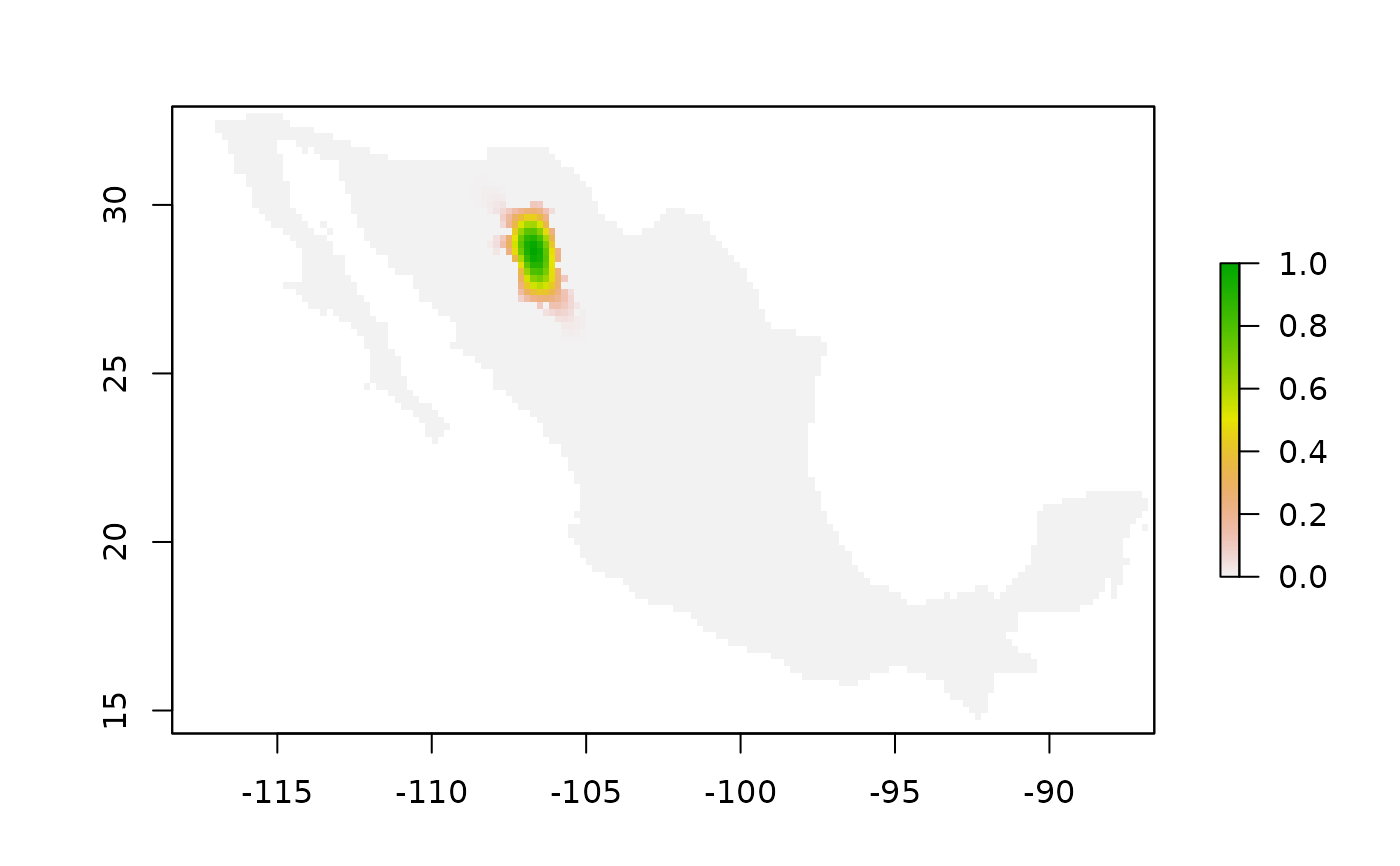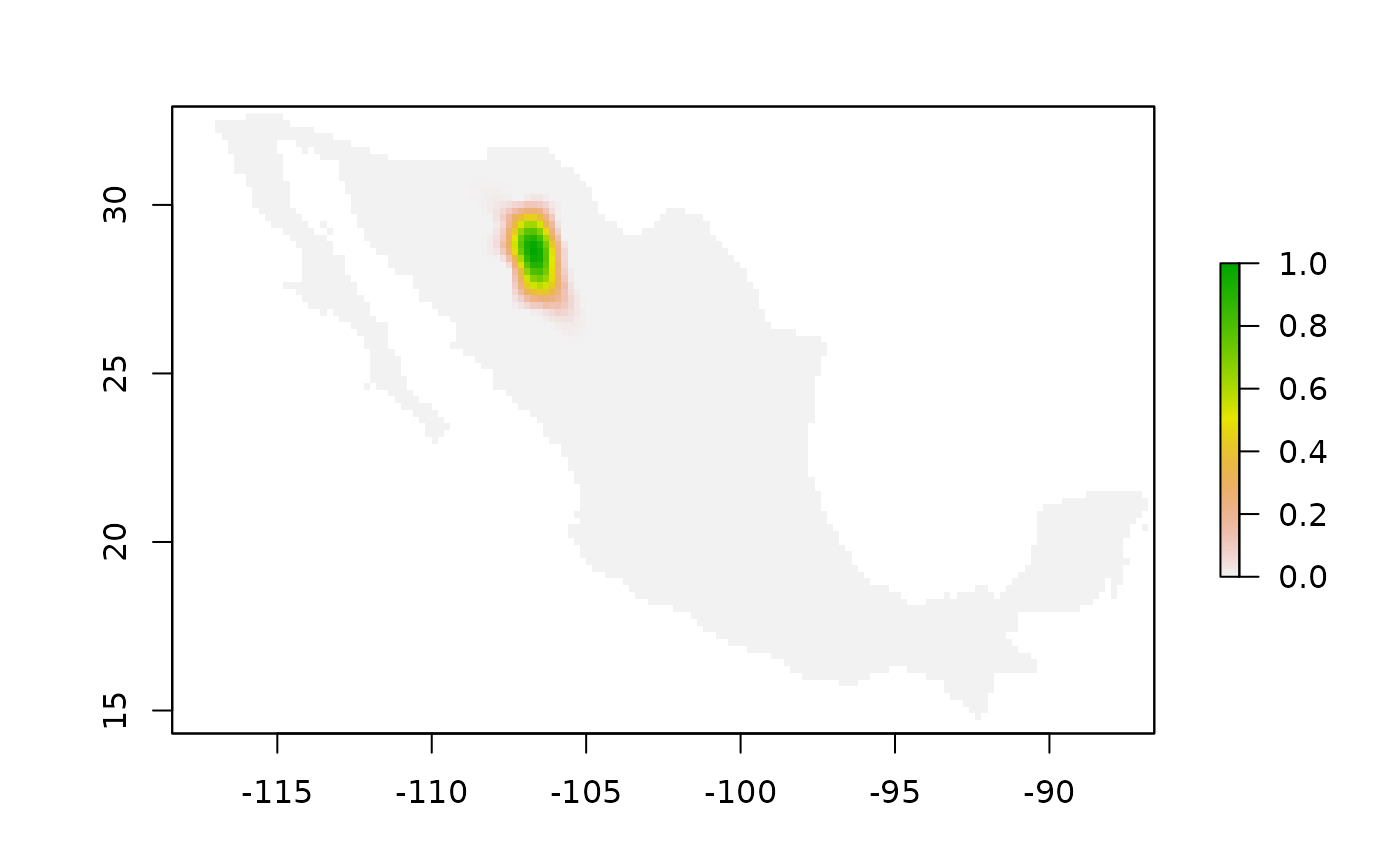Calculates the Eigen values and Eigen vectors of bam objects
Arguments
- A
A bam object of class setA.
- M
A bam object of class setM.
- AM
A logical value to specify whether to use the product AM or MA. If true the AM will be returned else the product MA will be returned.
- which_eigen
An integer representing the which eigen value and eigen vector will be computed.
- rmap
Logical. If TRUE the function will return a map of the eigen vector of the product AM.
Value
A list with four objects. 1) eigen_values (these are indicated in which_eigen parameter of the function), 2) eigen_vectors (the corresponding eigen vectors of each eigen value), 3) Standardized eigen vectors (0 to 1), 4) A RasterLayer depicting the information of the first eigen vector of the system.
Details
The eigenvector associated with the dominant eigenvalue of an adjacency matrix provides information about the number of forms in which a cell can be visited from other cells. Details about the eigen analysis in the context of the area of distribution can be found in Soberon and Osorio-Olvera (2022).
References
Soberón J, Osorio-Olvera L (2023). “A dynamic theory of the area of distribution.” Journal of Biogeography6, 50, 1037-1048. doi:10.1111/jbi.14587 , https://onlinelibrary.wiley.com/doi/abs/10.1111/jbi.14587. .
Examples
# \donttest{
model_path <- system.file("extdata/Lepus_californicus_cont.tif",
package = "bamm")
model <- raster::raster(model_path)
sparse_mod <- bamm::model2sparse(model = model,0.75)
plot(sparse_mod@niche_model)
 adj_mod <- bamm::adj_mat(sparse_mod,ngbs = 1,eigen_sys = TRUE)
# Product AM
eig_bam_am <- bamm::eigen_bam(A=sparse_mod,M=adj_mod,AM=TRUE)
raster::plot(eig_bam_am$map)
adj_mod <- bamm::adj_mat(sparse_mod,ngbs = 1,eigen_sys = TRUE)
# Product AM
eig_bam_am <- bamm::eigen_bam(A=sparse_mod,M=adj_mod,AM=TRUE)
raster::plot(eig_bam_am$map)
 # Product MA
eig_bam_ma <- bamm::eigen_bam(A=sparse_mod,M=adj_mod,AM=FALSE)
raster::plot(eig_bam_ma$map)
# Product MA
eig_bam_ma <- bamm::eigen_bam(A=sparse_mod,M=adj_mod,AM=FALSE)
raster::plot(eig_bam_ma$map)
 # }
# }
